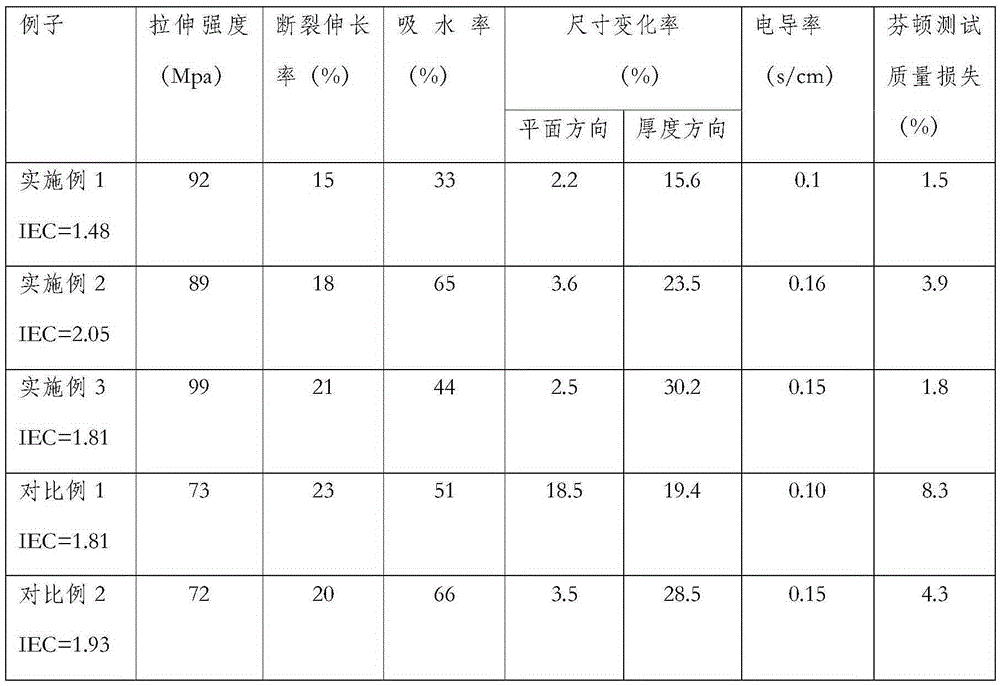Preparation method of cross-linking polypyrrolone-sulfonated polyimide segmented copolymer proton exchange membrane
A technology of sulfonated polyimide blocks and proton exchange membranes, which is applied in the field of proton exchange membranes, can solve the problems of poor resistance to free radical oxidation, low proton conductivity, and decreased stability, and achieve improved resistance to free radicals. The effect of improving the oxidation performance, improving the overall performance and inhibiting the swelling rate
- Summary
- Abstract
- Description
- Claims
- Application Information
AI Technical Summary
Problems solved by technology
Method used
Image
Examples
Embodiment 1
[0027] (a) Synthesis of NTDA-terminated polypyrrolene prepolymer
[0028] In a 100mL dry three-necked flask, 10mmol of 3,3'-diaminobenzidine DAB, 10.5mmol of 1,4,5,8-naphthalene tetracarboxylic anhydride NTDA, 22mmol of benzoic acid, 3mL of isoquinoline and 40mL of m- cresol, nitrogen protection and magnetic stirring; 1h later, the temperature was raised to 80°C for 4h, 180°C for 20h, after the reaction was completed, the temperature was lowered to 80°C and quickly poured into 150mL of methanol to obtain a large amount of solid precipitation. After the product was repeatedly washed with methanol, the polymer was collected by suction filtration and dried in a vacuum oven at 160°C for 20 hours for use;
[0029] (b) Synthesis of BAPBDS end-capped sulfonated polyimide prepolymer
[0030] In a 100mL dry three-neck flask, add 1.6mmol 4,4'-bis(4-aminophenoxy)biphenyl-3,3'disulfonic acid aniline BAPBDS, 12.5mLm-cresol and 0.7mL triethylamine in sequence, Nitrogen protection and magn...
Embodiment 2
[0038] Similar to Example 1, the only difference is that 12 mmol of NTDA is used in step (a).
Embodiment 3
[0040] Similar to Example 1, the only difference is that 11 mnol of NTDA is used in step (a).
PUM
 Login to View More
Login to View More Abstract
Description
Claims
Application Information
 Login to View More
Login to View More - R&D
- Intellectual Property
- Life Sciences
- Materials
- Tech Scout
- Unparalleled Data Quality
- Higher Quality Content
- 60% Fewer Hallucinations
Browse by: Latest US Patents, China's latest patents, Technical Efficacy Thesaurus, Application Domain, Technology Topic, Popular Technical Reports.
© 2025 PatSnap. All rights reserved.Legal|Privacy policy|Modern Slavery Act Transparency Statement|Sitemap|About US| Contact US: help@patsnap.com

